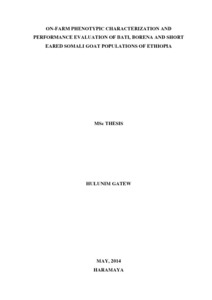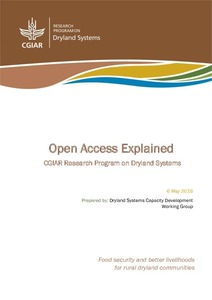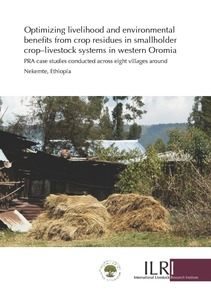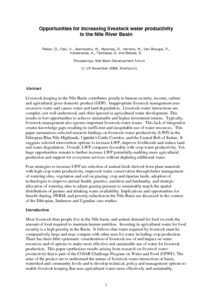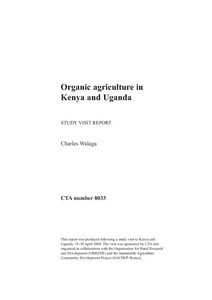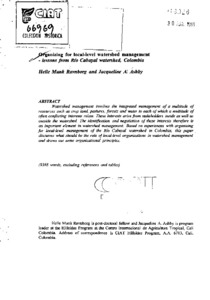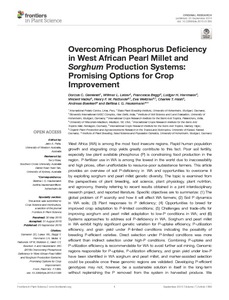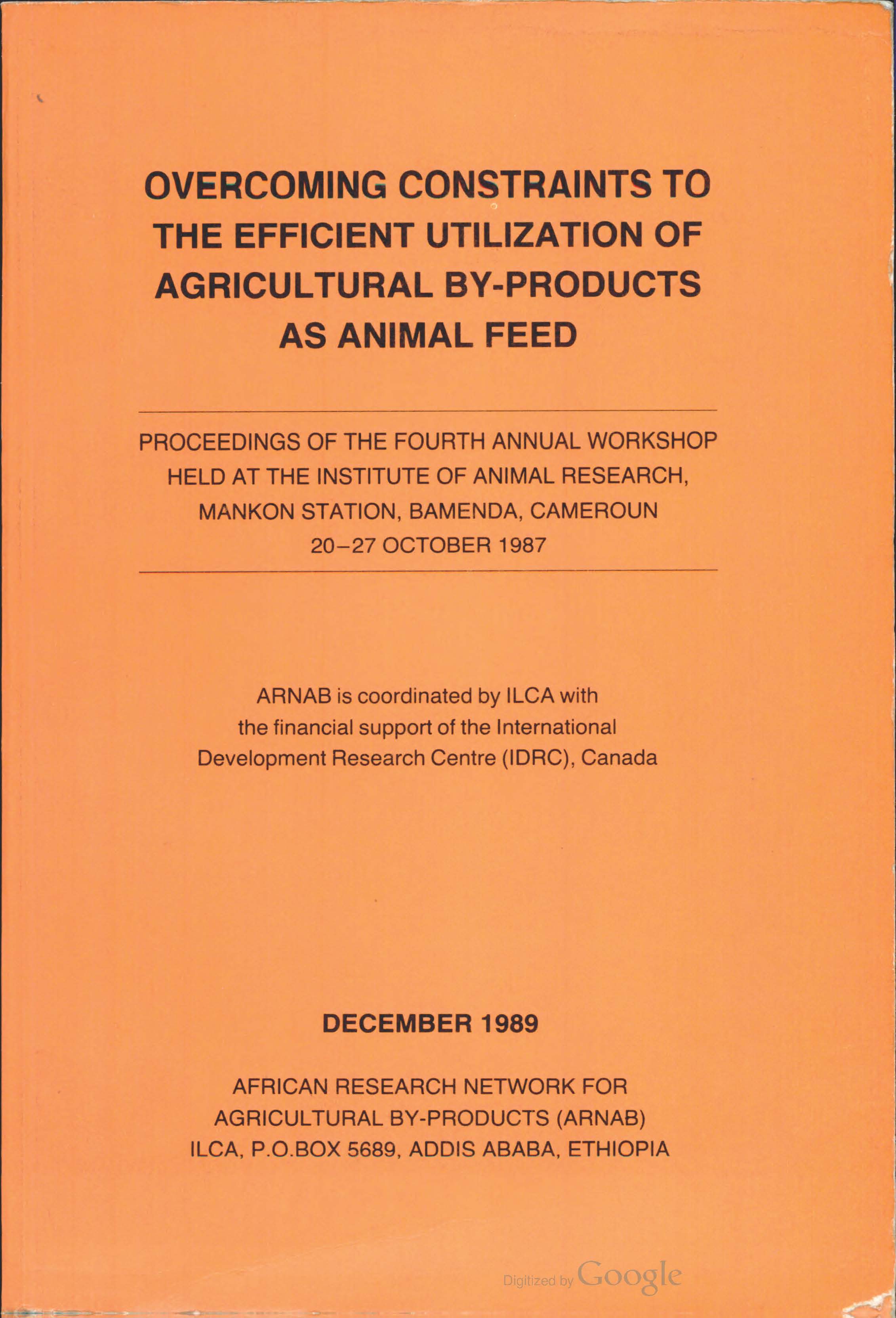rangelands
AGROVOC URI: http://aims.fao.org/aos/agrovoc/c_6448
On-farm phenotypic characterization and performance evaluation of Bati, Borena and short eared Somali goat populations of Ethiopia
The objectives of this study were to describe the production systems, the morphological features, and growth and reproductive performances of Bati (Central Highland ecotype), Borena (Long eared Somali ecotype) and Short-eared Somali indigenous goat populations in their home tract, Ethiopia. The study covered Bati and Kalu districts for Bati goats in Oromiya and South Wollo zones (Amhara Region), respectively; Yabello for Borena goats in Borena zone (Oromia Region); and Shinille and Erer from Siti (the previous Shinille zone, in Somali Region) for Short-Eared Somali goats.
Operationalizing inclusive innovation: Lessons from innovation platforms in livestock value chains in India and Mozambique
Various authors have identified the potential relevance of innovation system approaches for inclusive innovation, that is, the means by which new goods and services are developed for and by the poor. However, it is still a question how best to operationalize this. Innovation platforms (IPs) represent an example of putting an inclusive innovation system approach into practice by bringing different types of stakeholders together to address issues of mutual concern and interest with a specific focus on the marginalized poor.
Opportunities for water-efficient livestock production
Optimizing livelihood and environmental benefits from crop residues in smallholder crop-livestock systems in western Oromia: PRA case studies conducted across eight villages around Nekemte, Ethiopia
Options for agriculture at Marrakech climate talks: messages for SBSTA 45 agriculture negotiators
SBSTA 45 in Marrakech represents a unique opportunity for Parties to decide on the future of agriculture within the UNFCCC. The process of discussions on issues related to agriculture initiated at COP17 in Durban 2011 culminates at COP22 in Marrakech 2016. The explicit reference to food security in the preamble of the Paris Agreement and the Intended Nationally Determined Contributions which prioritize agriculture as a sector for adaptation and mitigation actions, provide a foundation for Parties to develop appropriate frameworks to support
Opportunities for increasing livestock water productivity in the Nile River Basin
Livestock keeping in the Nile Basin contributes greatly to human security, income, culture and agricultural gross domestic product (GDP). Inappropriate livestock management uses excessive water and causes water and land degradation. Livestock-water interactions are complex, not well understood, and often ignored in agricultural water development. This results in lost opportunities to achieve sustainable and higher investment returns. Typically, livestock management also ignores important livestock-water issues.
Organic agriculture in Kenya and Uganda: study visit report
This report was produced following a study visit to Kenya and Uganda, 19–30 April 2004. The visit was sponsored by CTA and organised in collaboration with ORREDE and SACDEP–Kenya.
Organizing for local-level watershed management : lessons from Rio Cabuyal watershed, Colombia
Watershed management involves the integrated management of a multitude of resources such as crop land, pastures, forests and water to each of which a multitude of often conflicting interests relate. These interests arise from stakeholders inside as well as outside the watershed. The identification and negotiation of these interests therefore is an important element in watershed management.
Overcoming phosphorus deficiency in West African pearl millet and sorghum production systems: promising options for crop improvement
West Africa (WA) is among the most food insecure regions. Rapid human population growth and stagnating crop yields greatly contribute to this fact. Poor soil fertility, especially low plant available phosphorus (P) is constraining food production in the region. P-fertilizer use in WA is among the lowest in the world due to inaccessibility and high prices, often unaffordable to resource-poor subsistence farmers. This article provides an overview of soil P-deficiency in WA and opportunities to overcome it by exploiting sorghum and pearl millet genetic diversity.


